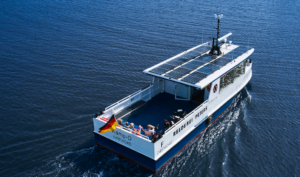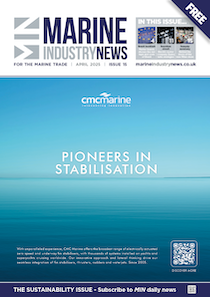Royal Navy aims to create one of the world’s greenest fleets
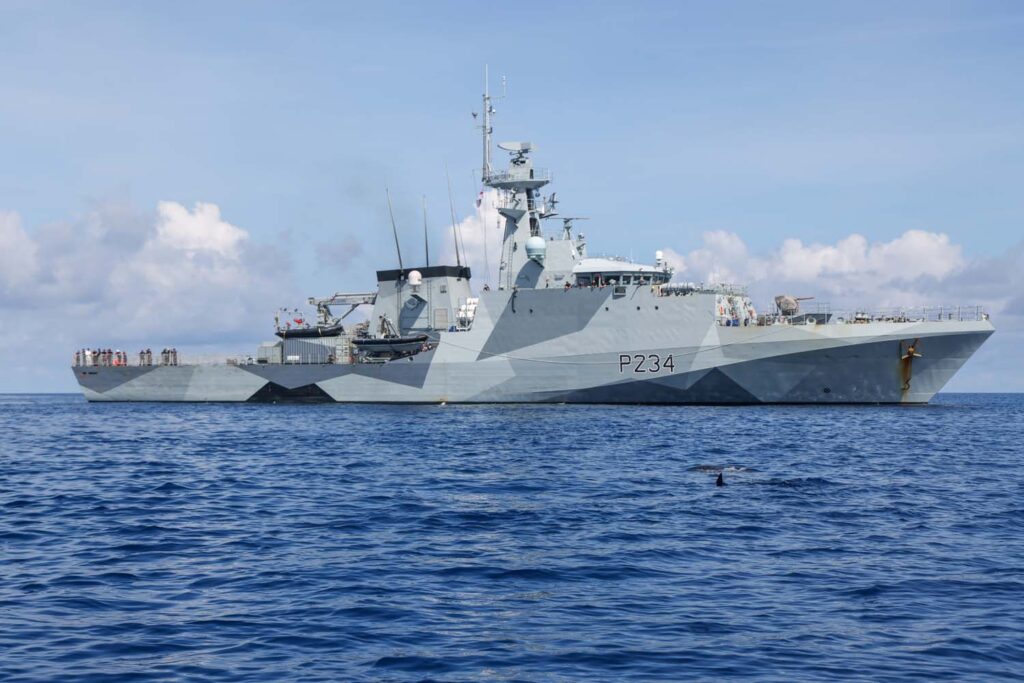 Pictured: HMS Spey’s Ship’s Company gather on the upper deck to view the whale sharks.
HMS SPEY SPOT WHALE SHARKS
On 27th April 2022, HMS Spey Ship’s Company had a rare opportunity to of spoting some whale sharks. One of HMS Spey’s roles out here is to not to contempt with marine life as best they can and promote biodiversity.
Ship’s company gathered onto the upper deck to view the several whale sharks on the starboard side. Originally spoted as sharks eating a whale until AB(SEA) Fox, a keen wild life enthusiaste, corrected it to be whale sharks. Watch keepers who were asleep on their off watch even got out of bed for the excitement. Everyone from chefs to marine engineers stopped what they were doing to watch the whale sharks.
Whale sharks spotted were young whales sharks up to 3 to 5 metres long.The whale shark is a slow-moving, filter-feeding carpet sharks and the largest known extant fish species. The largest confirmed individual had a length of 18.8m.
HMS Spey departed Portsmouth on the 7th September 2021 to be forward deployed to the Indo-Pacific and her deployment has seen the Batch 2 Offshore Patrol Vessel work with partners and allies in the region, and offer support to British interests, including Pitcairn and a network of Commonwealth countries.
Pictured: HMS Spey’s Ship’s Company gather on the upper deck to view the whale sharks.
HMS SPEY SPOT WHALE SHARKS
On 27th April 2022, HMS Spey Ship’s Company had a rare opportunity to of spoting some whale sharks. One of HMS Spey’s roles out here is to not to contempt with marine life as best they can and promote biodiversity.
Ship’s company gathered onto the upper deck to view the several whale sharks on the starboard side. Originally spoted as sharks eating a whale until AB(SEA) Fox, a keen wild life enthusiaste, corrected it to be whale sharks. Watch keepers who were asleep on their off watch even got out of bed for the excitement. Everyone from chefs to marine engineers stopped what they were doing to watch the whale sharks.
Whale sharks spotted were young whales sharks up to 3 to 5 metres long.The whale shark is a slow-moving, filter-feeding carpet sharks and the largest known extant fish species. The largest confirmed individual had a length of 18.8m.
HMS Spey departed Portsmouth on the 7th September 2021 to be forward deployed to the Indo-Pacific and her deployment has seen the Batch 2 Offshore Patrol Vessel work with partners and allies in the region, and offer support to British interests, including Pitcairn and a network of Commonwealth countries.
The Royal Navy is aiming to create one of the world’s greenest fleets, from infrastructure in dockyards, the technology on warships and the operations carried out around the globe. This plan has been kickstarted by the Navy’s first ‘net zero’ carbon building, based in Portsmouth, UK.
The Royal Navy’s eight new type 26 frigates will be painted with environmentally friendly, anti-fouling paint to limit marine growth, while the vessel underwent a hydrodynamic redesign to add speed without the need for larger engines.
The Queen Elizabeth Carrier Forward Logistics Centre in Portsmouth Naval Base is completely solar-powered, from the lights to the heating and computer systems, and even the forklift trucks. This centre is the first ‘net zero’ carbon building in the Navy.
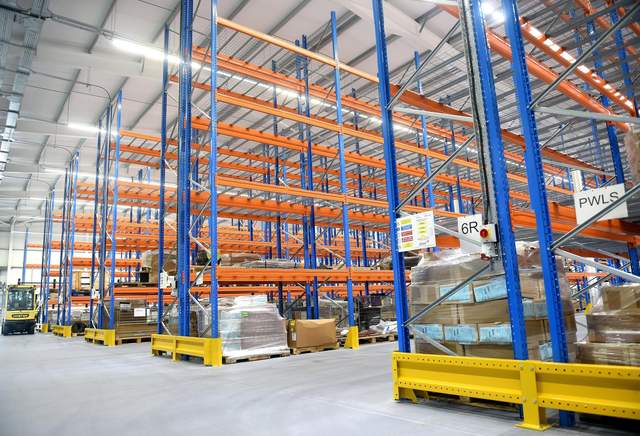
The £7m logistics hub contains the spare parts, tools and documentation the carriers need during maintenance periods. The base has already won three environmental awards.
Image courtesy of Sarah Standing / Portsmouth News
The £7m logistics hub contains the spare parts, tools and documentation the carriers need during maintenance periods. The base has already won three environmental awards.
New patrol ships HMS Tamar and Spey, which are on long-term deployments to the Indo-Pacific, have catalytic reduction systems to reduce nitrous oxide emissions, while icebreaker HMS Protector supports international research into wildlife and climate change in Antarctica and Royal Navy patrol ships deployed across the globe regulate fishing stocks.
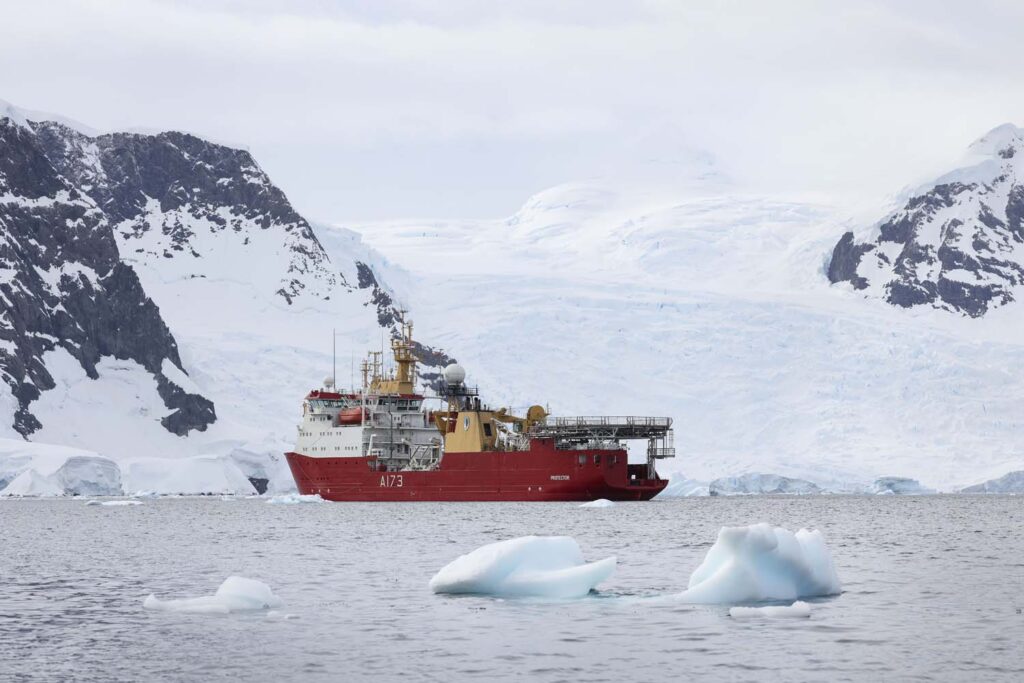
All of this is a boost to green ambitions during the UK’s ‘Net Zero Week’, designed to raise awareness about climate change as the UK looks to reduce all greenhouse gas emissions to net zero by 2050.
The base’s commanding officer, Commodore John Voyce, says: “Portsmouth Naval Base has established many low-carbon initiatives in order to achieve our target of being carbon-neutral.
“This includes electric vehicles and charging points, installation of wind turbines, and of course the construction and opening of our first carbon-neutral building in June this year – the first Royal Navy infrastructure construction to be Net Zero in operation.
“I am delighted to support and contribute to the government’s carbon reduction goals, and Team Portsmouth will continue to work on many more exciting actions to further improve our carbon footprint, not just for the Royal Navy and our base, but for the future of the city of Portsmouth as well.”
The Royal Navy is also setting a sustainability standard for its serving warships. Before deploying on operations, every crew and their ship must meet the exacting standards of the Fleet Operational Sea Training teams based in Plymouth.
In addition, from next year, ships will be recognised if they meet sustainability standards under what will be known as the Green Pennant scheme.
Meanwhile, at HMS Collingwood in Fareham, Hampshire, £2.4m has been invested in building management systems, which have been installed to monitor and control energy usage, while conservation projects are being undertaken across the Royal Navy’s bases and stations as part of the Queen’s Green Canopy project, which marks Her Majesty’s Platinum Jubilee.



